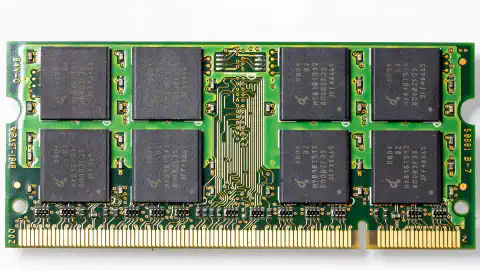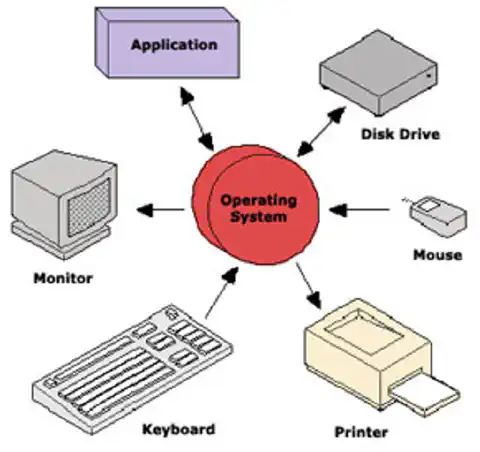Cryptography Unveiled: A Comprehensive Exploration of Encryption Techniques Across History and Technology Eras

Table of Contents
Unveiling the Secrets of Cryptography: A Deep Dive into Encryption Techniques
Cryptography has a rich history that spans ancient civilizations, medieval times, and the modern era. It plays a vital role in securing sensitive information and communications. This article provides a deep dive into encryption techniques, covering historical developments, principles of cryptography, symmetric and asymmetric encryption techniques, and their key takeaways.
Key Takeaways
- Understanding the historical development of cryptography is essential for appreciating its significance in today’s digital age.
- The principles of cryptography, including confidentiality, integrity, and authentication, form the foundation of secure communication and data protection.
- Symmetric encryption techniques, such as substitution ciphers, transposition ciphers, and block ciphers, are crucial for ensuring data confidentiality and integrity.
- Asymmetric encryption techniques, like the RSA algorithm, elliptic curve cryptography, and Diffie-Hellman key exchange, enable secure key exchange and digital signatures.
- Exploring the key takeaways from each section provides a comprehensive understanding of encryption techniques and their importance in cybersecurity.
Historical Development of Cryptography
Ancient Cryptography Techniques
Ancient cryptography techniques laid the foundation for the development of cryptography as a discipline. These techniques were primarily used to ensure confidentiality of sensitive information during wartime and diplomatic communications. The use of substitution ciphers and transposition ciphers was prevalent in ancient civilizations such as Egypt, Rome, and Greece. These early encryption methods were essential for securing military strategies and confidential messages. The evolution of ancient cryptography techniques reflects the enduring importance of confidentiality in the field of cryptography.
Medieval Cryptography Techniques
Medieval cryptography techniques marked a significant shift in the evolution of encryption methods. These techniques were developed in response to the increasing need for secure communication and the protection of sensitive information. The use of ciphers and codes became more sophisticated during this period, laying the foundation for the principles of cryptography that we rely on today.
One notable medieval cryptography technique is the use of transposition ciphers. These ciphers involved rearranging the letters of a message according to a specific pattern or key, making it difficult for unauthorized individuals to decipher the original content. Another technique employed during this era was the use of substitution ciphers, where each letter in the plaintext was replaced with a different letter or symbol, further enhancing the confidentiality of the message.
In the context of data security, medieval cryptography techniques played a crucial role in safeguarding sensitive information during a time of heightened risk. The development of these techniques laid the groundwork for the principles of cryptography that continue to underpin modern encryption methods. It is essential to recognize the historical significance of these methods in shaping the landscape of data security and confidentiality .
Modern Cryptography Techniques
As a cybersecurity expert, it is crucial to understand the modern cryptography techniques that form the foundation of secure communication and data protection. These techniques have evolved to address the increasing complexity of cyber threats and the need for robust encryption methods.
Advanced Encryption Standard (AES), also known as Rijndael, is a widely adopted symmetric block cipher algorithm. It operates on fixed-size blocks of data and is highly secure, making it suitable for a wide range of applications.
Elliptic Curve Cryptography (ECC) is an asymmetric encryption technique that leverages the mathematical properties of elliptic curves to provide strong security with shorter key lengths. This makes ECC particularly efficient for resource-constrained environments, such as mobile devices and IoT devices.
Post-Quantum Cryptography is an emerging field that focuses on developing cryptographic algorithms resistant to attacks by quantum computers. As quantum computing capabilities advance, the need for post-quantum cryptographic solutions becomes increasingly important.
It is essential for organizations to stay informed about the latest advancements in modern cryptography and to continuously evaluate and update their encryption strategies to mitigate evolving security risks.
Principles of Cryptography

Confidentiality
Confidentiality is a fundamental principle in cryptography that ensures the protection of sensitive information from unauthorized access. It involves the use of encryption techniques to transform plaintext into ciphertext, making the data unreadable to anyone without the proper decryption key. This principle is essential for safeguarding classified data, trade secrets, and personal information from malicious actors. Implementing strong cryptographic algorithms and secure key management is crucial for maintaining confidentiality in digital communications and data storage. Maintaining confidentiality is a critical aspect of cybersecurity and is vital for protecting against threats such as Active Ransomware Families .
Integrity
The principle of integrity in cryptography is crucial for ensuring the trustworthiness of data. It involves the protection of data from unauthorized modification or tampering. This is achieved through the use of cryptographic primitives that enable the verification of data integrity. These primitives include hash functions, digital signatures, and message authentication codes (MACs). Hash functions play a key role in verifying the integrity of data by generating a unique fixed-size hash value for a given input. Digital signatures provide a means of verifying the authenticity and integrity of a message or document, while MACs ensure the integrity of transmitted data by creating a tag that can be used to verify the data’s authenticity. It is essential to implement robust integrity mechanisms to safeguard against unauthorized alterations and maintain the reliability of data. Ensuring data integrity is a fundamental aspect of cryptography that underpins the security of digital communications and transactions.
Authentication
Authentication is a crucial aspect of data verification in cryptography. It ensures that the parties involved in a communication are who they claim to be. This process involves the use of digital signatures and certificates to verify the identity of the sender and receiver. Data verification is essential for maintaining the integrity and authenticity of the transmitted information. It plays a vital role in preventing unauthorized access and tampering of sensitive data. The use of public key infrastructure (PKI) is a common practice for implementing robust data verification mechanisms. This involves the use of asymmetric encryption techniques to establish trust and verify the authenticity of digital entities. Data verification is a fundamental principle that underpins the security of digital communications and transactions.
Symmetric Encryption Techniques

Substitution Ciphers
Substitution ciphers are a type of symmetric encryption technique that involves replacing each plaintext character with a different ciphertext character. This method is based on the principle of confidentiality, where the goal is to keep the original message hidden from unauthorized parties.
Substitution ciphers can be further categorized into monoalphabetic ciphers and polyalphabetic ciphers. Monoalphabetic ciphers use a single fixed substitution for each plaintext character, while polyalphabetic ciphers use multiple substitutions based on a keyword or key phrase.
It’s important to note that while substitution ciphers were historically significant, they are vulnerable to frequency analysis attacks, where the frequency of letters in the ciphertext can be used to deduce the original message. As a cybersecurity expert, it’s crucial to understand the limitations of substitution ciphers and consider more secure encryption techniques for protecting sensitive information.
Transposition Ciphers
Transposition ciphers are a type of symmetric encryption technique that involves rearranging the order of characters in a message. This method does not alter the actual characters, but rather changes their positions to create an obfuscated version of the original message. The security of transposition ciphers relies on the complexity of the rearrangement pattern, making it essential to use a strong and random key for encryption and decryption. While transposition ciphers provide a basic level of confidentiality, they are vulnerable to brute force attacks and are not suitable for securing highly sensitive information. It is important to complement transposition ciphers with additional encryption techniques to enhance the overall security of the data. Below is a table illustrating the comparison between substitution ciphers and transposition ciphers:
| Encryption Technique | Security Level | Complexity |
|---|---|---|
| Substitution Ciphers | Low | Low |
| Transposition Ciphers | Medium | Medium |
Transposition ciphers can be a useful component in a layered encryption strategy, where multiple encryption methods are employed to strengthen the protection of data. However, it is crucial to understand their limitations and employ them judiciously in conjunction with other cryptographic techniques to mitigate potential vulnerabilities.
It is advisable to avoid relying solely on transposition ciphers for securing sensitive information, especially in the era of advancing quantum computing and the potential threat it poses to traditional encryption algorithms.
Asymmetric Encryption Techniques

Elliptic Curve Cryptography
Elliptic Curve Cryptography is a powerful asymmetric encryption technique that leverages the mathematical properties of elliptic curves. It provides a high level of security with shorter key lengths, making it suitable for resource-constrained environments. The key exchange process in Elliptic Curve Cryptography involves the generation and exchange of public and private keys, ensuring secure communication between parties. This technique is widely used in modern cryptographic systems and is a key component of many secure communication protocols. When implementing Elliptic Curve Cryptography, it is essential to consider key management practices to maintain the integrity and confidentiality of cryptographic keys. Additionally, organizations should prioritize secure implementation and regular security audits to mitigate potential vulnerabilities and ensure robust wallet security.
It is crucial to adhere to best practices for key management and secure implementation to safeguard against potential threats and vulnerabilities in cryptographic systems. Regular security audits play a vital role in identifying and addressing security weaknesses, ensuring the overall integrity and confidentiality of sensitive data. Organizations must prioritize wallet security to protect digital assets and maintain trust in cryptographic solutions.
Diffie-Hellman Key Exchange
The Diffie-Hellman Key Exchange is a fundamental asymmetric encryption technique used to securely exchange cryptographic keys over a public channel. It enables two parties to establish a shared secret key without having to transmit the key directly. This technique is based on the concept of discrete logarithms and is widely used in various cryptographic protocols and systems. The security of the Diffie-Hellman Key Exchange relies on the difficulty of solving the computational problem of discrete logarithms. It provides a crucial mechanism for establishing secure communication channels in the context of public-key cryptography. The Diffie-Hellman Key Exchange is an essential component in the implementation of secure communication protocols, including SSL/TLS and SSH. Its significance in modern cryptography cannot be overstated, as it forms the basis for secure key exchange in a wide range of applications and systems.
Conclusion
In conclusion, the historical development of cryptography has evolved significantly from ancient techniques to modern encryption methods. The principles of cryptography, including confidentiality, integrity, and authentication, form the foundation of secure communication and data protection. Symmetric encryption techniques such as substitution ciphers, transposition ciphers, and block ciphers, along with asymmetric encryption techniques like the RSA algorithm, elliptic curve cryptography, and Diffie-Hellman key exchange, demonstrate the complexity and diversity of encryption methods. As technology continues to advance, the field of cryptography will undoubtedly undergo further innovation and refinement, ensuring the continued security of digital information and communication.
Frequently Asked Questions
What is cryptography?
Cryptography is the practice and study of techniques for secure communication in the presence of third parties.
What are the main principles of cryptography?
The main principles of cryptography are confidentiality, integrity, and authentication.
What is symmetric encryption?
Symmetric encryption is a type of encryption where the same key is used for both encryption and decryption.
What is asymmetric encryption?
Asymmetric encryption is a type of encryption where a pair of keys (public and private) is used for encryption and decryption.
What is the RSA algorithm?
The RSA algorithm is a widely used asymmetric encryption algorithm for secure data transmission.
How does Diffie-Hellman Key Exchange work?
Diffie-Hellman Key Exchange is a method for securely exchanging cryptographic keys over a public channel.





